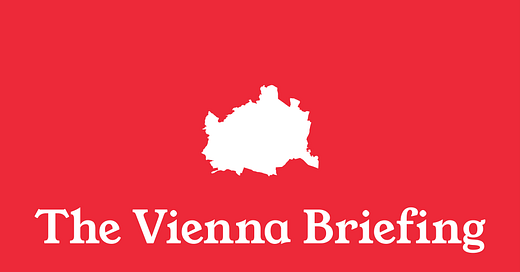Your Questions, Answered
In this week's edition, I answer your questions about the longest round of post-election coalition negotiations in Austria's postwar history
Servus!
And welcome to this special edition of The Vienna Briefing in which I attempt to answer your questions about the current political situation in Austria, where a new government—a coalition of conservative People’s Party (ÖVP), center-left Social Democratic Party (SPÖ), and liberal NEOS—was sworn in on Monday, ending months of political uncertainty. Thank you to everyone who submitted questions. Indeed, I received so many responses that I will be running a second Q&A next week. But for now, let’s start with:
Who was responsible for the failure of the first round of negotiations between the ÖVP, SPÖ, and NEOS?
I think the blame principally rests with the ÖVP who, in the end, caved to economic and business interests in their party who believed it would have been better to form a coalition with the far-right Freedom Party (FPÖ) because they were in favor of lower taxes and non-wage labor costs. That is not to absolve the other parties completely, of course. The NEOS were terribly naïve to leave the coalition negotiations first, believing that the ÖVP and SPÖ would form a coalition without them. And by all accounts, that first round of negotiations was rancorous and dysfunctional from the off, with too many negotiators and cooks spoiling the broth. Perhaps no party took seriously enough the idea that the ÖVP would bail and negotiate with the FPÖ, making them less open to compromise.
Why has their second attempt to form a coalition worked?
Part of it has to do with the ÖVP coming to the realization that even though they do indeed govern with the FPÖ in many states, FPÖ leader Herbert Kickl wasn’t someone they could do business with. There were reports throughout the negotiations with the FPÖ that the ÖVP had been talking to the SPÖ on the side. Otherwise, I think these negotiations were successful this time because of clear incentives. These were the longest post-election coalition negotiations in the history of postwar Austria, and the president had more-or-less demanded compromise. Austria needs a new government to carry out budget consolidation. Another round of elections was not an option for either the ÖVP or SPÖ for reasons of finance and popularity. And, the negotiations between the FPÖ and ÖVP had demonstrated that a far-right chancellor was realistic and achievable, which I think put the fear of god into everyone.
Thank you for reading The Vienna Briefing. Nothing beats a personal recommendation; if you know someone who would be interested in reading this newsletter, consider sharing it with them today.
The Vienna Briefing is a reader-supported publication. Your one-time or monthly tips make my work on this newsletter possible and help keep The Vienna Briefing free for everyone.
What would have had happened if no coalition had seemed possible? Could the parties have forced new elections? Would a caretaker government have been in place for a set amount of time?
These are good questions and, in the event of a stalemate, there were many possible avenues out. First, parliament could have called new elections, though since only the FPÖ had an interest in that, it is unlikely elections would have found a parliamentary majority. Second, the president could have appointed a ÖVP or ÖVP-NEOS minority government, but that would have required the supply and confidence of other parties, i.e. the SPÖ. Third, the president could have appointed a government of experts, delaying elections for as long as a parliamentary majority tolerated it, likely one to two years to give the country a little breathing room before new elections. It’s hard to say, of course, but I would have thought that a government of experts would have been the likeliest of the three remaining options.
Who was running the federal government while coalition negotiations were ongoing?
After a federal election, the previous government—in this case, the ÖVP-Green cabinet—remains in place until a new government can be sworn in. This meant that Karl Nehammer remained chancellor until his resignation on January 10. He was succeeded by Alexander Schallenberg, who acted as chancellor and foreign minister simultaneously until the new coalition was sworn in this week.
Reports in Austrian media suggested that during the FPÖ-ÖVP negotiations, Kickl was only present for eight hours and demanded things he knew the ÖVP could and would not accept. What do you think was really going on there? Did the FPÖ and Kickl really want to form a government or were they trying to set up new elections?
This is a difficult question, but I think the answer speaks to Kickl’s philosophy and style. Kickl was a first-hand witness to the compromises the FPÖ made in 2000 and 2017 to gain power and the toll being in coalition had on the party. Kickl believes the FPÖ should only enter government if it is in a position to institute its policies, which would transform Austria into a Third Republic. In other words: Kickl wants to govern absolutely—or not at all. His maximalist negotiating style was, then, an attempt to learn from the mistakes of the past, as Kickl would see it, but in doing so, he made new mistakes. He underestimated the ÖVP’s power and resolve, and overestimated that the threat of new elections would force the ÖVP to toe the FPÖ’s line. Considering the underlying political conditions, including the need to make difficult budget cuts in the coming two years, you may be right, too, that it would advantageous for the FPÖ to remain in opposition for now.
Bis bald!




Interesting!
Thank you for your clear explanations.